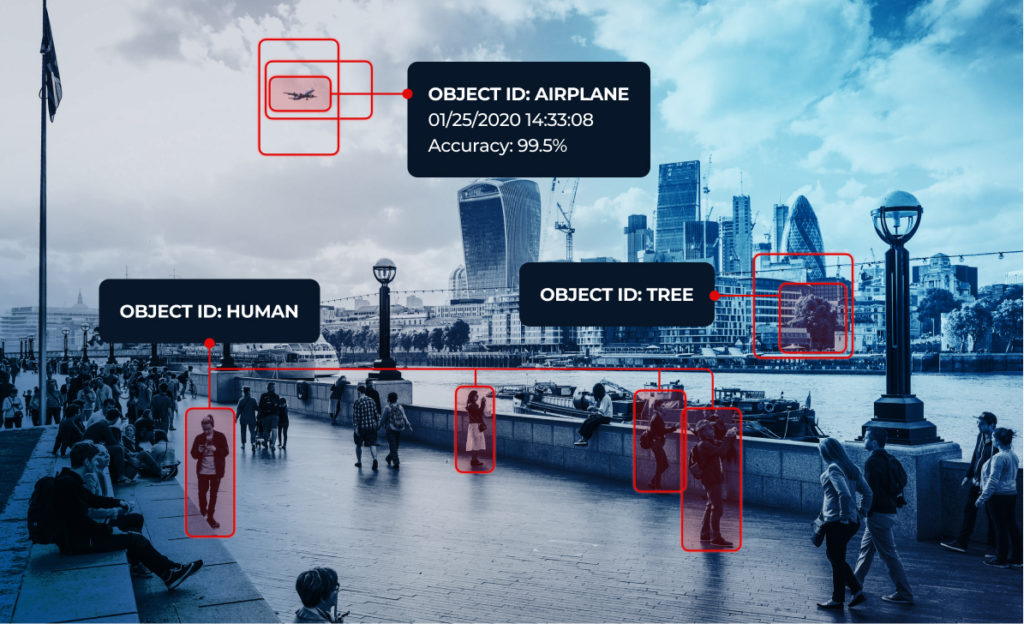Table of Contents
Image recognition technology is a cutting edge one. However, it can barely be called a huge novelty, since we use it now on a daily basis. I bet you’ve benefited from image search in Google or Pinterest, or maybe even used virtual try-on once or twice. This way or another you’ve interacted with image recognition on your devices and in your favorite apps.
But did you know that this technology is a complex and multifaceted one? It has so many forms and can be used in so many ways making our life and businesses better and smarter. Face recognition, object detection, image classification – they all can be used to empower your company and open new opportunities.
This blog post will be dedicated to the real value of image recognition and it will cover all crucial aspects starting with what this technology is, how it works, where it can be used and ending with the role of machine learning and computer vision in all of this. We have no time to waste, so let’s get started!
All you need to know about image recognition
To begin with, let’s define image recognition and find out what’s so special about this technology. In general image recognition is a specific mechanism that is used to identify an object or subject on the given image and to perform image classification the way people can do it. In other words, image recognition is the technology that can be trained to see necessary objects.
The importance of image recognition work is hard to underestimate, since now it can even be trained to identify objects and patterns that the human eye may not catch. On top of that image recognition is smart enough to make independent decisions and process visual data automatically.
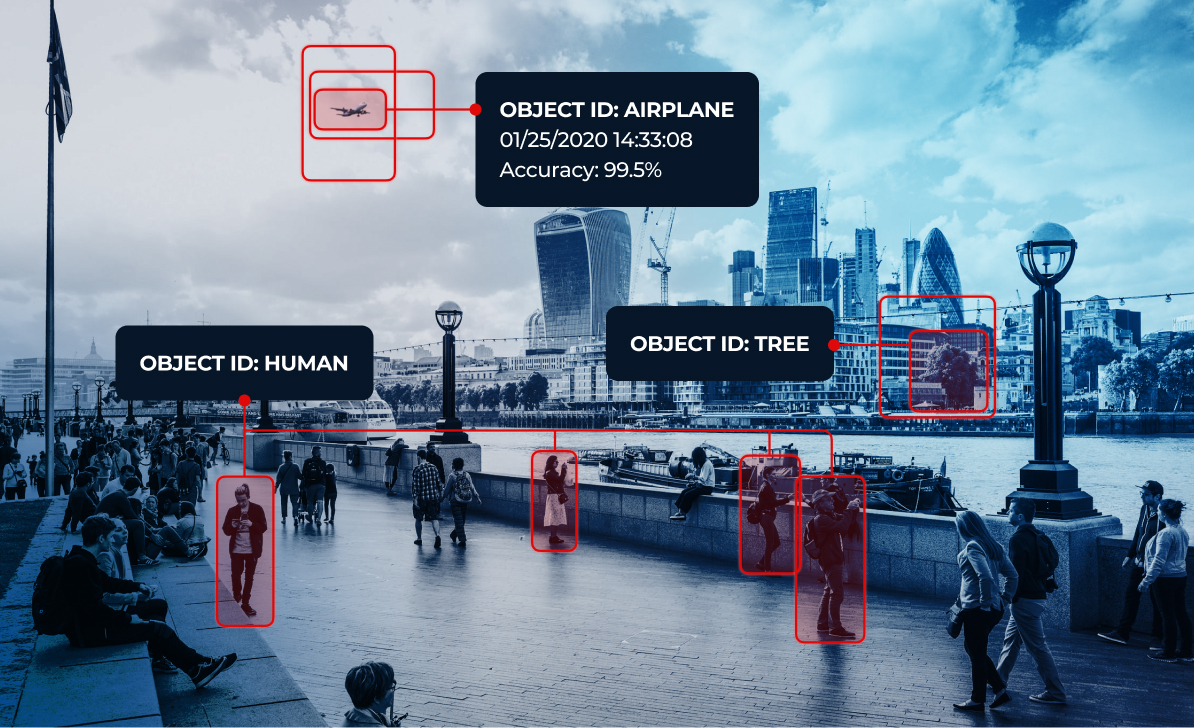
To perform object recognition, the technology uses a set of certain algorithms. And while several years ago the possibilities of image recognition were quite limited, the introduction of artificial intelligence and deep learning helped to expand the horizons of what this mechanism can do.
We will discuss how image recognition works and what technologies are used to make it smarter a little bit later, and now let’s talk about image recognition in comparison with other related terms.
Image Recognition compared with other terms
We often notice that image recognition is still being mixed up interchangeably with some other terms – computer vision, object localization, image classification and image detection. However, they all complete a bit different tasks.
Some people still think that computer vision and image recognition are the same thing. However, computer vision is what let’s image recognition complete various tasks.For example, to perform image classification is one computer vision task, and to complete object detection – is absolutely a different sub-task.
- Image classification - this process implies that the technology will process an image, recognize what object is on it and then perform object classification.
- Object localization - during this step the object is not only recognized and classified, but also the technology specifies its location on the image and creates a bounding box around it.
- Image detection - when there are several objects on the image, the system will be able to locate and identify them all and put them into bounding boxes. Here is how all these processes work:
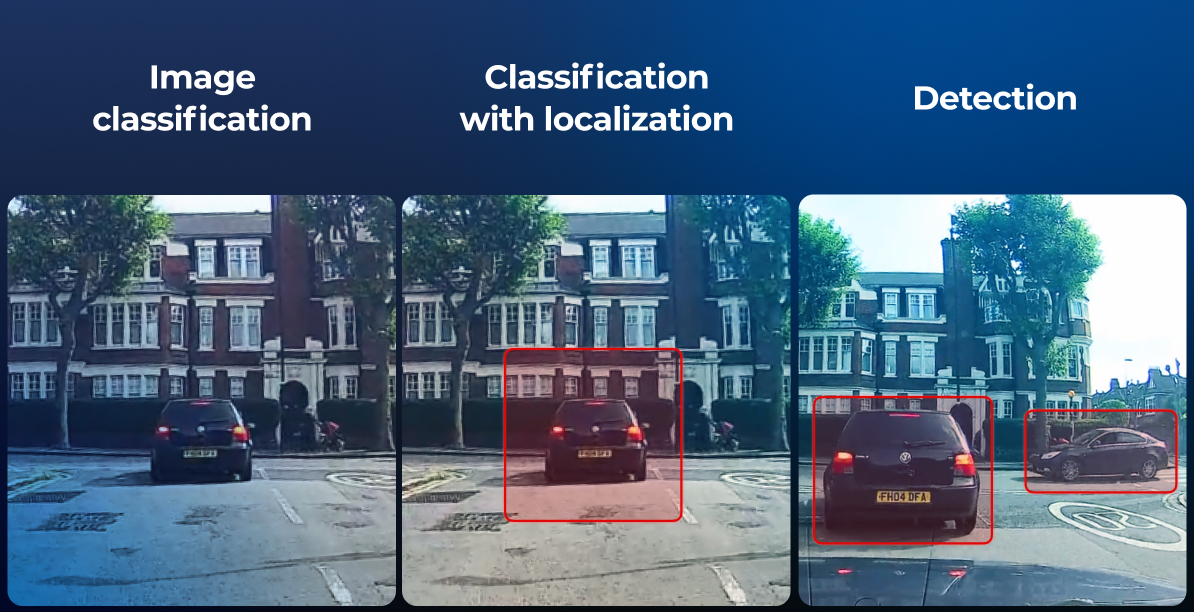
How image recognition applications work
Now it’s time to find out how image recognition apps work and what steps are required to achieve the desired outcomes. Generally speaking, to recognize any objects in the image, the system should be properly trained. You need to throw relevant images in it and those images should have necessary objects on them.
By extracting and recognizing the patterns, the system learns to accurately detect objects, classify them and create required algorithms. Most image recognition solutions apply a neural network to analyze the information properly.
The process of image recognition includes three main steps that are system training, testing and evaluating provided results, making predictions that are based on real data. Training data image recognition algorithms is the most crucial step and it requires a lot of time. Tech team should upload images, videos, photos featuring the objects and let deep neural networks time to create a perception of how the necessary class of object looks and differentiates from others.
Once the training step is finished, it is necessary to proceed to holistic training of convolutional neural networks. During this stage some specific deep learning frameworks will be used. As a result your solution will create a smart neural network algorithm able to perform precise object classification.
And last but not least, the trained image recognition app should be properly tested. The best way to do this is to apply AI model testing. It will check the created model, how precise and useful it is, what its performance is, if there are any incorrect identification patterns, etc. With time the image recognition app will improve its skills and provide impeccable results.
Tasks that image recognition can complete
The main advantage of all image recognition apps for businesses is that they can perform different tasks depending on the industry and its needs. We have selected several most popular tasks that businesses look for when they initiate image recognition app development. They are:
Two main training types of image recognition systems
We’ve already mentioned how image recognition works and how the systems are trained. But now we’d like to cover in detail three main types of image recognition systems that are supervised and unsupervised learning.
Supervised learning
This type of learning is often called a classification one since it implies that you will train the system to identify one certain class of images. To do this and for example train your system to recognize boats you need to upload images of boats and other vehicles and specify them as “not boats”.
Under your supervision the system will learn to classify vehicles and recognize only boats. Once the training is finished, the system can start using predictive classification and identify objects on its own.
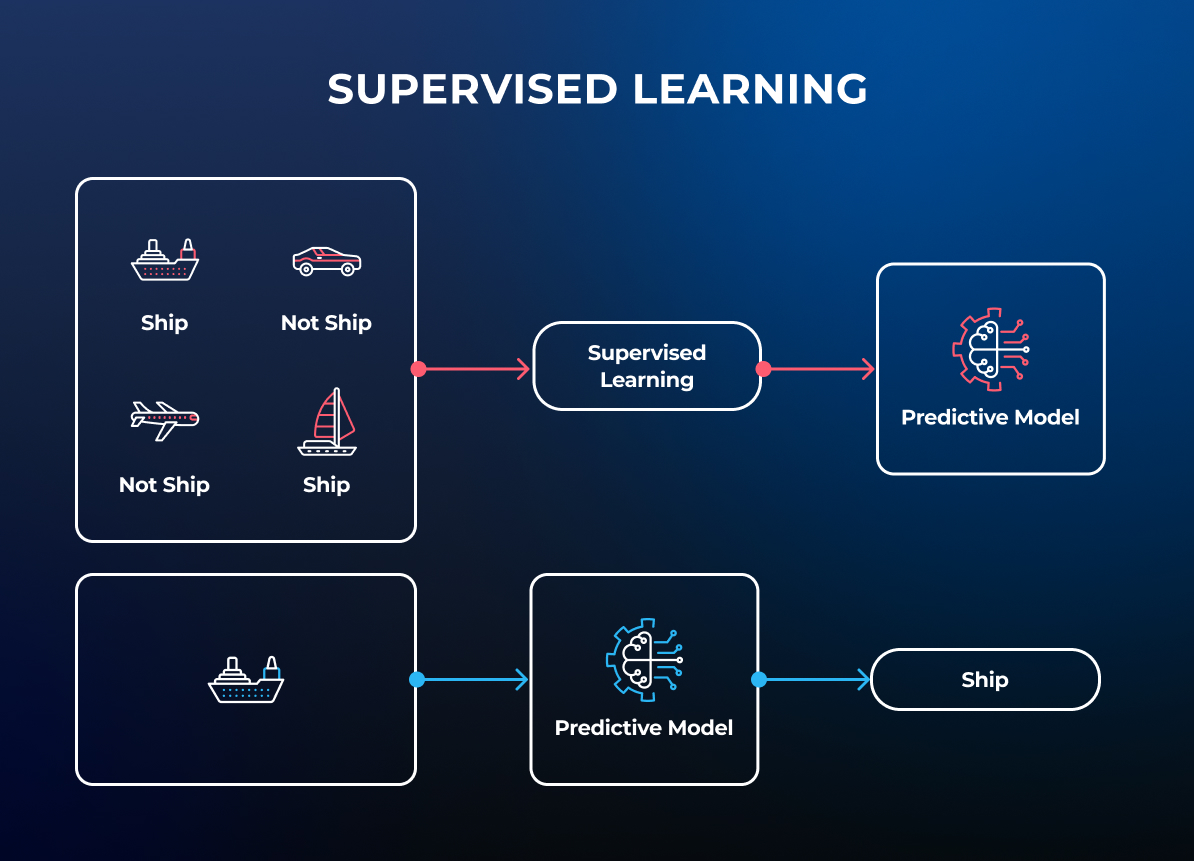
Unsupervised learning
This is a clustering learning algorithm and by utilizing it you can upload images to your image recognition system and it will automatically figure out the objects on the images, identify their differences and similarities and perform their classification. Here is a short scheme demonstrating how it works:
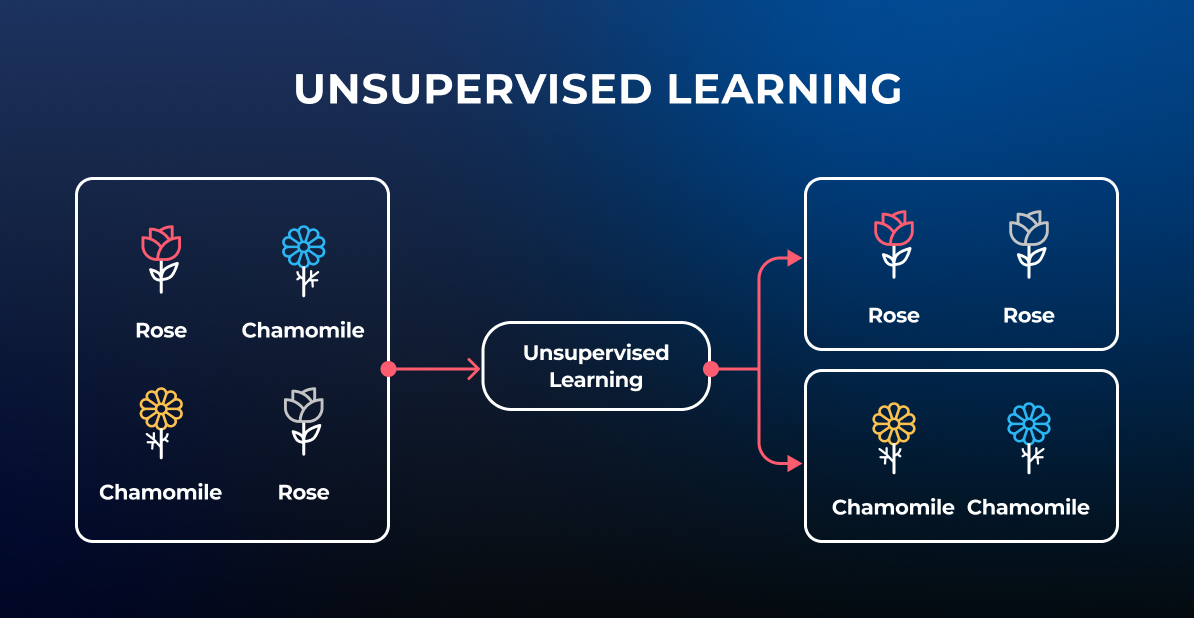
Popular algorithms and image recognition models
As we’ve mentioned earlier, to make image recognition work seamlessly it is crucial to train it well and use proper learning algorithms and models. As of now there are three most popular machine learning models – support vector machines, bag of features and viola-jones algorithm. Speaking about AI powered algorithms, there are also three most popular ones. So let’s take a closer look at all of them right away and see what makes them really useful.
Faster RCNN
Faster region-based CNN is a neural network image recognition model that is based on regional analysis. Here is how it works – you upload a picture with objects, and the technology points out areas in the picture where the object is located. After that the algorithm performs image classification. The process is performed really fast because the system does not analyze every pixel pattern.
Single Shot Detector
After an image recognition system detects an object it usually puts it in a bounding box. But sometimes when you need the system to detect several objects, the bounding boxes can overlap each other.
And that is exactly why a single shot detector algorithm is needed. It uses the grood to divide parts of the image. As a result several anchor boxes are created and the objects are separated properly.
You Only Look Once (YOLO)
This image recognition model provides fast and precise results because it has a fixed-size grid and can process images from the first attempt and look for an object within all areas of the grid. Once the necessary object is found, the system classifies it and refers to a proper category.
Viola-Jones algorithm
This is a widely used algorithm for face recognition. The system can scan the face, extract information about the features and then proceed with classifying the face and looking for exact matches. It created several classifiers and tested the images to provide the most accurate results.
Support Vector Machines
This machine learning model also called SVM teaches the system to make histograms of images that contain necessary objects and the ones that don’t. Then the system takes a test image and compares created histograms with the areas of image to find the matches or required objects.
Bag of features models
This image recognition model processes two images – the original one and the sample that is used as a reference. It compares them and performs a match of pixels to check if the required object on the sample and the uploaded image is the same. It also easily detects matches and finds similar features on images.
What technologies are applied
Image recognition systems are rather complex solutions and they require implementation of certain technologies. Most image recognition apps are built using Python programming language and are powered up by machine learning and artificial intelligence. We decided to cover the tech part in detail, so that you can fully delve into this topic.
Python as the most popular choice
Whatever popular image recognition application you take, it would probably be created using Python. This is because this language allows you to support and access a lot of libraries necessary for AI image processing, object detection and recognition.
In most cases programmers use a deep-learning API called Keras that lets you run AI powered applications. Also there are cases when software engineers make use of image recognition platforms that speed up the development and deployment of apps able to process and identify objects and images.
Basically to create an image recognition app, developers need to download extension packages that sometimes include the apps with easy to read and understand coding. Then they start coding an app, add labeled datasets, draw bounding boxes, label objects and run the solution to test how it works.
ML and AI for image recognition
Machine learning and artificial intelligence are crucial for solutions performing image classification, object detection, and other image processing tasks. These technologies let programmers effectively train the system using deep learning, improve accuracy of detection of the same class objects, analyze image data in real time and many more. It is hard to imagine an effective image recognition app that exists without AI and ML.
For more advanced systems, the developers use edge AI that allows faster image and visual data processing without offloading all the data and uploading it to the cloud. This allows to ensure better performance and make systems incredibly useful for huge companies and enterprises.
Business industries that benefit from image recognition apps
The real value of image recognition technology and software is that it can power up businesses in so many unexpected ways. To demonstrate how effective image recognition is, we decided to collect some examples of use cases and explain what this technology is capable of and why you should consider implementing it.
Healthcare
We all know that telehealth apps already shape the future of medicine. But what if we tell you that image recognition algorithms can contribute drastically to the further improvements of the healthcare industry.
Image recognition can be actively used to perform medical image analysis. For example, the software powered by this technology can analyze X-ray pictures, various scans, images of body parts and many more to identify medical abnormalities and health issues. The diagnostics can become more precise and the right treatments can be prescribed earlier thanks to image recognition apps.
Apart from this use case, it is possible to apply image recognition to detect people wearing masks. Since the COVID-19 still stays with us and some countries insist on wearing masks in public places, a system detecting whether this rule is followed can be installed in malls, cinemas, etc.
Retail and e-commerce
You own an e-commerce company and still do not use an image recognition system? Well, then you definitely lose a lot of opportunities to gain more customers and boost your sales. These days many digital platforms for retail and e-commerce use image recognition to analyze digital images of goods that clients searched, identify objects on them, and then perform advanced analytics of what customers like and buy more often.
Also image recognition can be used to introduce convenient visual search and personalized goods recommendations. The system can analyze previous searches of a client or uploaded image with objects on it and recommend images with similar goods or items that might be of interest to this or that client. Image recognition can help you adjust your marketing strategy and advertising campaigns, and as a result – gain more profit.
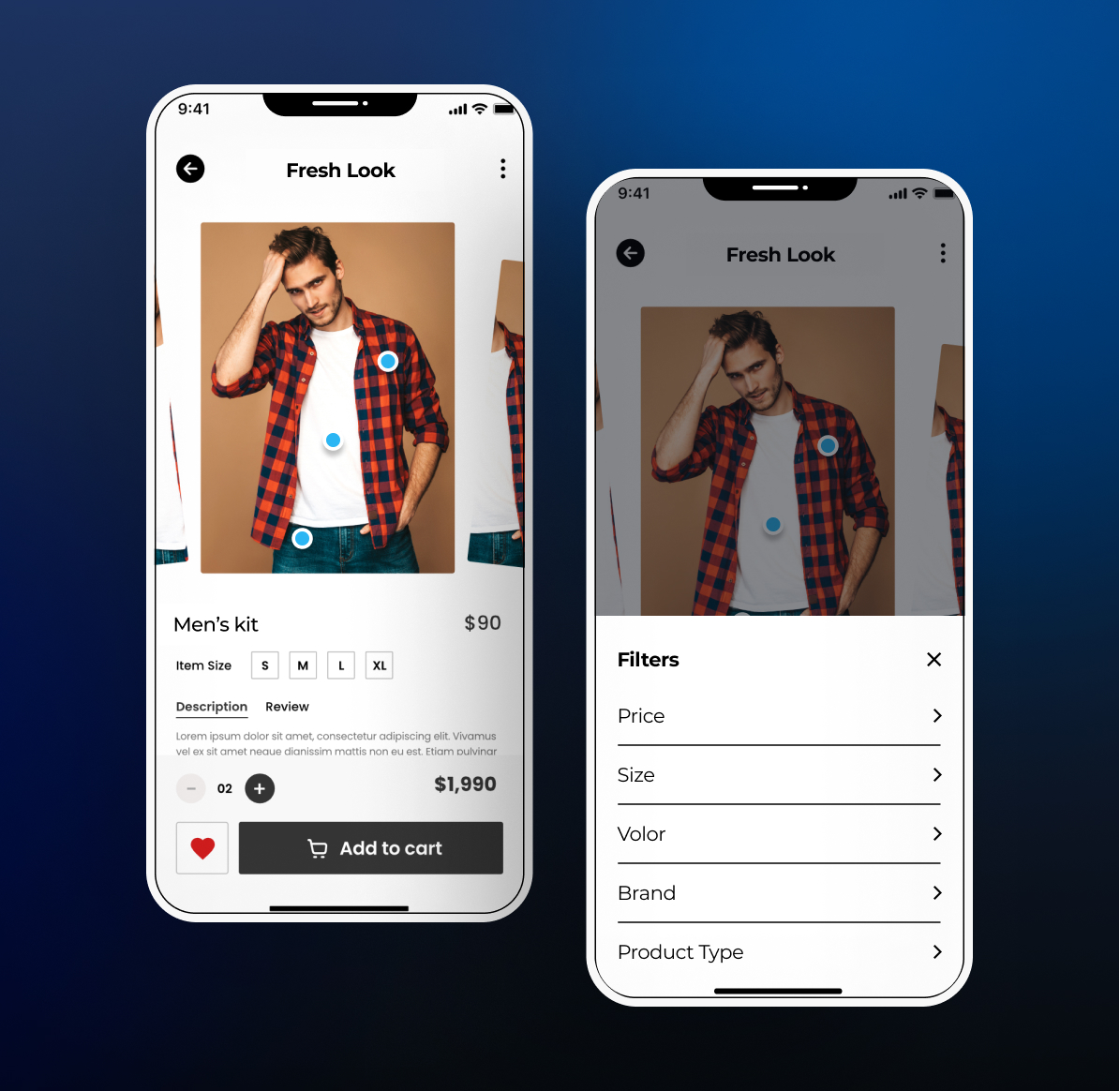
Agriculture
These days image recognition software has become a must-have for agriculture business. Let’s be honest, the work of farmers can barely be called an easy one. They need to supervise and control so many processes and equipment, that the software becomes a necessity rather than luxury. And while many farmers already use IoT and drone mapping solutions, they miss so many opportunities that image recognition and object detection offer.
For example, image recognition can help to detect plant diseases if you train it accordingly. While drones can take pictures of your fields and provide you with high quality images, the software can perform image recognition processes and easily detect and point out what’s wrong with the pants.
Manufacturing
Manufacturing industry can make so much use of image detection solutions. It is a well-known fact that manufacturing companies use a lot of expensive and complex machinery and equipment. And it is crucial to take good care of it and perform proper damage control. And that’s exactly what image recognition can help you with. Train your system to recognize flaws in the equipment, and you will never have to spend extra costs.
Another interesting use case of image recognition in manufacturing would be smarter inventory management. You can take pictures of the shelves with your goods, upload them to the system and train it to recognize the items, their quantity, and stock level. The system will inform you about the goods scarcity and you will adjust your processes and manufacturing thanks to it.
Computer vision became a must-have for the manufacturing industry. Read our detailed blog post to find out what problems it helps to solve, how it works and how to apply it.
Security and surveillance
Security means a lot, that is why it is important for companies ensuring it to go hand in hand with advanced technologies and cutting edge devices. Object detection and facial recognition can help drastically to notice suspicious people and objects in their luggage at airports and train stations.These technologies are capable of performing fast matching of fingertips and faces. Also multiple object detection and face recognition can help you quickly identify objects and faces from the database and prevent serious crimes.
Face detection can also be actively used to ensure safety in offices. Such systems can be installed in the hallways or on devices to prevent strangers from entering the building or using any company data stored on the devices.
Social media
Social media is one more niche that already benefits from image recognition technology and visual search. Let’s take Facebook as an example. This widely used social network has a face recognition option. The photo recognition on Facebook works this way – you upload a picture with other people, the system recognizes your friends on it and suggests you to tag them on your photo.
Picture recognition is also actively used by Twitter, LinkedIn, Pinterest and many more. And what’s more exciting, it can help social media to increase user engagement and improve advertising.
Build new image recognition software with Altamira
Our software development company specializes in development of solutions that can perform object detection, analyze images, and classify it accurately. We use a deep learning approach and ensure a thorough system training process to deliver top-notch image recognition apps for business.
One of our latest projects is a solution for insurance business that helps to detect car damage after it got into a crash. Thanks to the deep learning techniques the system can easily detect how severely the car is crushed, what kind of damage is present, and help insurance agents to decide whether it’s the proper case and what kind of compensation should be issued.
This smart system uses photo recognition and to improve its accuracy our software engineers keep training it. During training images of damaged cars are used. The developers upload a sample photo, actually dozens or even hundreds of them and let the system explore the digital image, detect what car is on it, what kind of damage is present, what parts are broken, etc. Thoroughly pre trained system can detect and provide all information within seconds and make the work of insurance agents more effective, fast and accurate.
To wrap it up
Facial recognition, object recognition, real time image analysis – only 5 or 10 years ago we’ve seen this all in movies and were amazed by these futuristic technologies. They all seemed so unreal and complex. And now they are actively implemented by companies worldwide.Image recognition and image processing software already reshaped many business industries and made them more innovative and smart.
Thanks to machine learning and computer vision companies can use image recognition apps to their advantage and minimize human errors, reduce labor costs, gain crucial insights, and provide more personalized customer experience. Now is the right time to implement image recognition solutions in your company to empower it, and we are the company that can help you with that.


